Table of Contents
- Reverse osmosis Malta resources.
- Let's understand osmosis first
- What is a reverse osmosis (RO) system?
- What is a semi-permeable membrane (reverse osmosis membrane)?
- What does reverse osmosis water treatment remove ?
- How does an RO system work?
- Types of reverse osmosis systems
- RO vs. other filtration methods
- Why does a home reverse osmosis system waste water?
- How long do systems last?
- Does an RO system remove chlorine?
- Is bacteria growth inside a system possible?
- How does microfiltration work inside a system?
- Where to use a reverse osmosis system
- RO V bottled water in Malta
- What are the disadvantages of reverse osmosis water filters in Malta?
- Is the water from a reverse osmosis system in Malta healthy to drink?
- How much does a reverse osmosis system cost in Malta?
- How to choose the best RO system in Malta
- Is there an alternative to RO systems in Malta?
- What are the advantages of an activated carbon filter?
- Can I get a grant for reverse osmosis in Malta?
- Conclusion
Reverse osmosis Malta resources
If you're wondering if reverse osmosis (ro) is the right water filtration system for your home or office in Malta, you may want to consider the advantages and disadvantages of this leading technology. In this article, we explore how a reverse osmosis filter works and discuss some of the other options available in Malta.
RO works in Malta to give you drinking water, but it does have disadvantages so this article gives you all the details you need to make a great choice for you.

Let's understand osmosis first
Osmosis is a fascinating phenomenon that is essential for life on Earth. It is the process that enables water and other molecules to move from areas of high concentration to areas of low concentration across a semipermeable membrane.
Osmosis is responsible for the movement of water, nutrients, and waste between cells, and is especially important in helping plants absorb water from their roots. Osmosis is also used in a variety of industrial processes, such as desalination, wastewater treatment, and food preservation. Understanding osmosis and its effects can help us better understand the functions of our bodies and the world around us.
Osmosis is the movement of water across a semipermeable membrane from an area of low water concentration to an area of high water concentration.
Once we understand this we can see that reverse osmosis systems work in the opposite way - the movement of water across a semipermeable membrane from an area of high water concentration to an area of low water concentration.

What is a reverse osmosis (RO) system?
Reverse osmosis systems use a semi-permeable membrane to filter water. The reverse osmosis membrane is selected to allow large molecules such as ions, dissolved salts, and bacteria to pass through, while blocking smaller molecules such as protons, amino acids, and even some nutrients like vitamins, minerals, and enzymes.
In order for the process to occur, water is forced through a reverse osmosis membrane under pressure. This causes the water molecules to cause the membrane to expand. This increased size of the water molecules is the same as those inside a semi-permeable membrane; water molecules are not large enough to pass through it.

What is a semi-permeable membrane (reverse osmosis membrane)?
The semi-permeable membrane is the heart of all reverse osmosis (ro) systems. It is an incredible piece of biological engineering that can be found in a wide range of living organisms. It is a layer of selectively permeable material that allows certain molecules to pass through, while blocking the passage of others.
This amazing feature is used in cell membranes, allowing cells to control what enters and exits the cell. It also functions as a barrier between the inside and outside of an organism, allowing the organism to maintain a stable and regulated environment.
They are also used in artificial devices such as dialysis machines, which are used to purify and separate substances from one another.
What does reverse osmosis water treatment remove ?
Reverse osmosis systems removes nitrates, sulphates, heavy metals, and fluoride which is good, but it also removes healthy minerals such as magnesium, calcium, potassium and sodium which is often what one might look for if you are buying bottled mineral water.
How does an RO system work?
Reverse osmosis occurs when pressure is applied to feed water, in Malta this is the public water supply, to force it through a semi-permeable reverse osmosis membrane. The molecules in the water are the same size as those in the membrane, so the molecules cannot pass through. However, the molecules in the membrane are larger than the molecules in the water, so they can get through the membrane to the other side.
Reverse osmosis works when the incoming feed water is subjected to pressure sufficient to exceed osmotic pressure, the molecules of water are able to pass through the semi-permeable membrane, while the salts and other impurities are discharged through the reject stream, otherwise known as the concentrate or brine stream.
This waste water stream can be directed to the drain or, in some cases, recycled through the plumbing system to conserve water. The water that is able to traverse the RO membrane is called permeate or product water, and typically contains 95-99% fewer dissolved salts.
A home reverse osmosis filtration system will normally sit under the sink in your kitchen and need a technician to install for you and may include a number of different water filtration methodology in addition to a semi permeable membrane such as a sediment filter, carbon filter and re-mineralisation.

Types of reverse osmosis systems
- The most common type of reverse osmosis system is based on a single-stage. A single-stage system has a reverse osmosis membrane, a concentrate tank, and a distillate tank. The water that enters your home’s plumbing, known as feed water, flows through the membrane and into the concentrate tank, where it is cleaned and disinfected. The purified water flows through the membrane and into the distillate tank.
- A two-stage system has a feed and a concentrate stage, and the purified water goes through a membrane three times, a system like this has three passes which are different to the stages. The feed water flows through the membrane, and the impurities are deposited and disinfected before flowing into the concentrate tank. The purified water comes back through the membrane and into your home’s plumbing.
- A three-stage system has a feed, a concentrate, and a distillate stage, and the purified water goes through a membrane three times. The feed water flows through the membrane, and the impurities are collected and disinfected before flowing into the concentrate tank. The concentrate water flows through the membrane, and the impurities are collected and disinfected before flowing into the distillate tank. In a three stage system a sediment filter is often included which is useful in Malta.
RO vs. other filtration methods
Reverse osmosis (ro) is a great system for removing contaminants, including bacteria, chemicals, and heavy metals. However, it is not as good at removing organic matter, like sediment and other impurities that are found in the water so other systems like carbon filtration can also be considered.
Reverse osmosis differs to other systems mainly because it is using pressure tom achieve filtration.
The other filtration methods that you may run across are advanced filtration, carbon filters, and ultraviolet (UV) light.
- Advanced filtering systems are often used in conjunction with a water filter. They are a step above traditional water filters, as they are designed to remove microscopic particles.
- Carbon filters remove dissolved impurities by adsorbing them on the filter’s surface. They require regular replacement, as they can become clogged over time.
- UV light is a type of advanced filtration that uses a light bulb to kill harmful bacteria in the water. It works best for clear water, such as well water, and is often not used in homes with tap water.
Why does a home reverse osmosis system waste water?
A reverse osmosis system is an effective way to purify water, removing impurities and creating clean drinking water. However, these systems also have one major drawback - they waste a lot of water in the process.
A reverse osmosis system works by forcing water through a membrane that filters out impurities, and this process requires a great deal of water, with roughly 3 to 5 litres of water being wasted for every litre of purified water produced.
The waste water washes out the contaminants from building up in the membrane, without this the membrane would become clogged and cease functioning efficiently.
This can be a major issue for those living in areas with limited access to water, or during periods of drought. While it may be necessary to use a reverse osmosis system in order to obtain clean, safe water, it is important to be aware of the potential for water waste.
The amount of water used for a reverse osmosis system is dependent on the pressure used to force the water through the membranes. The lower the pressure, the more water that will pass through the membrane, so the higher the potential for water waste.
The pressure used in a RO system is greater than the atmospheric pressure at sea level, but lower than the pressure required to compress water into a liquid. Because of this, RO systems require a special type of pressure tank, which must be filled above sea level.
This special tank allows the system to use a lower pressure while still producing water at a rate similar to potable water. If the pressure used in a system is too low, little or no water will be produced and contaminants present in the source water will be passed through the membrane. If the pressure used in a system is too high, the membrane will be damaged and the water produced will be highly corrosive.
How long do systems last?
Generally, reverse osmosis systems provide a reliable and effective water filtration system. The system itself typically has a lifespan of 10-15 years but the components may need to be replaced at regular intervals.
The pre- and post- filters should be changed every 6 months or annually depending on the quality of water. Reverse osmosis membranes are the most important part of a reverse osmosis system and is recommended to be replaced every 2-4 years.
It is essential to replace these components in order to ensure the effectiveness of the water filter system, as well as maintain the quality of the water that it produces. Furthermore, regular maintenance and cleaning can help extend the life of the reverse osmosis system. This could involve backwashing with clean water, cleaning components such as the air gap faucet and inspecting pipes for any obstructions or blockages. With proper care and maintenance, many reverse osmosis systems can last up to 15 years or more, making them an efficient and cost-effective solution for all your water filtration needs.
Reverse osmosis differs from other systems because of the large upfront costs involved which can be significant in addition to the annual maintenance agreements.
Does an RO system remove chlorine?
A reverse osmosis membrane does not remove chlorine, the best way to do that is with an activated carbon block filter, which is almost always another component in the reverse osmosis home filtration systems found in Malta, or one of the stages in a 5 stage water filtration system.
An activated carbon filter such as the filter inside a TAPP EcoPro water filter removes over 100+ contaminants including herbicides, pesticides, chlorine bi-products pharmaceuticals and more. Once filtered water is ready to drink and tastes great.
Is bacteria growth inside a system possible?
The blocking of membranes in an RO system is known as fouling. When contaminants accumulate on the membrane surface, it can rapidly cause a blockage.
This usually happens at the beginning of the RO system and tends to increase the pressure difference across the system, as well as decreasing the permeate flow.
This causes higher operational costs and the membranes may need to be washed or changed. Although fouling is unavoidable due to the small size of the RO membrane's pores, regular membrane changes can help to reduce the frequency of the issue and reduce the contamination on the membrane surface.
Bacteria are a very common cause of fouling on RO system membranes, since the membrane surface cannot be treated with chlorine, allowing the microorganisms to proliferate on the surface. This will result in the creation of biofilms that cover the membrane and cause severe fouling.
Post filtration with a microfiltration membrane tends to remove the bacteria unless the build up has been substantial.
How does microfiltration work inside a system?
Microfiltration (MF) is a method that is useful in eliminating tiny particles and bacteria, and its pore size is only 0.1-10µm. This technique is beneficial in decreasing the possibility of fouling in an RO system. Membrane structure could vary among manufacturers, but the "hollow fibre" style is the most common.
Normally, the water is pumped from the outside of the fibres, and the clean water is collected from the inside. For potable water applications, microfiltration membranes usually perform in "dead-end" flow. In this kind of flow, all of the liquid that is supplied to the membrane is filtered.
Where to use a reverse osmosis system
Mostly in a domestic situation in Malta an RO system will be put under the sink in an apartment with each owner looking after their own system.
It doe not have to be under the sink, so where space allows the reverse osmosis system can be placed in a shaft (although unlikely), or on a balcony.
In a house it maybe common to use a washroom or other utility location inside the house.
In offices or commercial premises such as shops, restaurants, garages and warehouses reverse osmosis systems can be placed wherever convenient.
To avoid post filtration contamination it is always best to house the filtration system near the water outlet.
It is not advisable to use reverse osmosis systems for pools or showers, but it does have its uses in agriculture such as in hydroponics and aquariums. Systems can also be installed in camper vans, caravans and boats.
RO V bottled water in Malta
Many types of bottled water have gone through a reverse osmosis purification process, but producing it is more wasteful of water than a reverse osmosis system. Consider the amount of water used to make a single bottle - when it's purified, the wastewater gets flushed away, and the manufacturing needs water and fossil fuels. Then, to deliver it to the store, more fossil fuel is used and the truck might be cleansed, requiring even more water. Reverse osmosis can generate water of the same clarity and taste as bottled water without such a negative effect on the environment.
Furthermore, an RO system can supply purified water constantly in a home, so there's no need to buy costly and wasteful bottled water. With a RO system, you can get bottled water quality water in the comfort of your own kitchen. You can even fill stainless steel bottles with the water and put them in the refrigerator, so you can have cool water to sip anytime.
What are the disadvantages of reverse osmosis water filters in Malta?
Historically reverse osmosis has become the standard for domestic water filtration systems in Malta and there exists a whole industry servicing the demand for clean drinking water for your tap. However today there are alternatives to reverse osmosis easily available.
There are several disadvantages of a reverse osmosis system which are summarised as follows:
- High investment - around €300 to €500 euros
- Wastes as much as 6X the water produced for drinking due to the low pressure environment in a domestic installation which cannot replicate the efficiency of the larger industrial reverse osmosis plants in Malta (Wikipedia)
- Requires professional maintenance to keep the system running
- Involves annual maintenance costs in addition to materials
- It is unwise to leave the system for long periods without use as water collected in the tank is no longer chlorinated and may become contaminated.
- The process removes healthy minerals
- The systems contain multiple components such as pressure tanks, RO modules, membranes, valves, pipes and a separate tap.
- Its quite a complex set up requiring professional installation watch this video to learn more about what makes up an RO systems and how to install it.
- Low flow rate - a reverse osmosis system flow rate will be less than a normal tap water supply.
Is the water from a reverse osmosis system in Malta healthy to drink?
A good system is able to take out any invisible pollutants that could cause illnesses. It basically functions like the kidneys in terms of cleaning the water before it goes into the body. Although it does take out some minerals such as calcium and magnesium, it doesn't mean that it is bad for you.
In general, our bodies are made up of 70-80% water which helps hydrate, lubricate our joints and helps organs perform so reverse osmosis filtered water will do this for you.
Whilst it is true that reverse osmosis removes minerals it is not necessary to have minerals in order for it to do those things. You would need to drink lots of water to get the right amount of minerals which would make a difference. The main source of minerals is food not water, so if you want more minerals, you should eat more fruits and vegetables.
But without the minerals in your drinking water you may find the taste a little bland.
The WHO has raised concerns about demineralised water, such as that from reverse osmosis systems, concluding that there is sufficient evidence that drinking water low in calcium or magnesium has negative health consequenes.

How much does a reverse osmosis system cost in Malta?
There is a wide range of suppliers and thus a wide range of prices for reverse osmosis systems in Malta, but generally speaking you will find prices from €299 to over €1,000.
The lower priced systems are more likely to use cheaper components and therefore generate less pressure which means more water will be wated. The higher priced systems will most likely be more compact and used to generate higher pressure leading to lower water wastage.
However its not only the initial investment that householders need to be aware of. reverse osmosis (RO) systems come with maintenance contracts and so higher priced systems may well have higher annual maintenance costs, in addition to the higher maintenance costs for systems with more stages, as there are more filters to change every year or two years depending on the types.
For a reverse osmosis system in Malta you can get a grant of up to €70 for one household, it is the same grant available for a TAPP Water filter also.
How to choose the best reverse osmosis systems in Malta
Here is a useful check list for you when choosing a reverse osmosis system:
- Budget - decide how much you are willing to spend
- Efficiency - find out how much water may be wasted
- Mitigation - work out the costs to mitigate the water wastage
- Guarantee - check the warranty and guarantee
- Maintenance agreement - check the details of the maintenance contract
- Filter replacement prices - check the current prices of filter replacements
- Location - decide where to install your chosen system
- Consider alternative solutions
Is there an alternative to reverse osmosis home water filters in Malta?
The tap water in Malta is already fit for human consumption and meets EU directive standards therefore the focus is on improving the taste of the water and removing possible contaminants such as chlorine, THMs, microplastics and heavy metals.
Water is seldom used for drinking directly from the tap in Malta without filtering, in general people do not like the taste of Malta tap water.
The TAPP EcoPro water filter is an excellent alternative to reverse osmosis in Malta and you can read a full comparison of TAPP V Reverse Osmosis.

What are the advantages of an TAPP EcoPro water filter?
An activated carbon water filtration block has the many advantages over a reverse osmosis system:
- Easy to install by anyone
- No maintenance, just replace filter cartridges
- Simple system, few components
- Low investment
- Leaves healthy minerals in the drinking water
- No water is wasted in the filtration process
- Low risk of post filtration contamination
- Water is ready to drink and tastes great, free from smell and taste of chlorine
TAPP EcoPro is the only sustainable activated carbon tap water filter in Malta.
Can I get a grant for reverse osmosis in Malta?
Any residential household can apply for a single grant for a home water purification systems so you can indeed apply for a grant for reverse osmosis in Malta.
The grant is only available once to one household and all household members.
The same grant system in Malta also applies for TAPP Water EcoPro water filters.
Conclusion
The Reverse Osmosis process is an established method for producing water that meets the necessities of a home water supply.
Further refinement after the RO system, can upgrade the taste and quality of the RO permeate and make it suitable for the most demanding taste buds.
Regular maintenance and inspection is required to ensure a quality supply is maintained and a better quality system will produce better quality results over time.
With high quality tap water now available in Malta an alternative to a Reverse Osmosis (RO) system could easily be considered and the TAPP EcoPro is a perfect example of a reliable tap water filtration system that involves far less maintenance and cost than reverse osmosis.

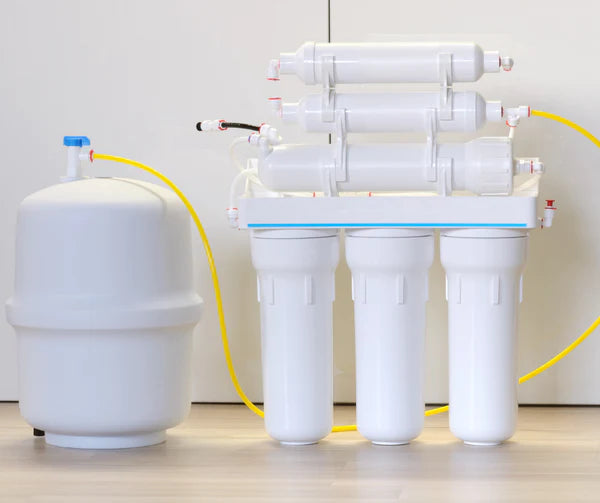

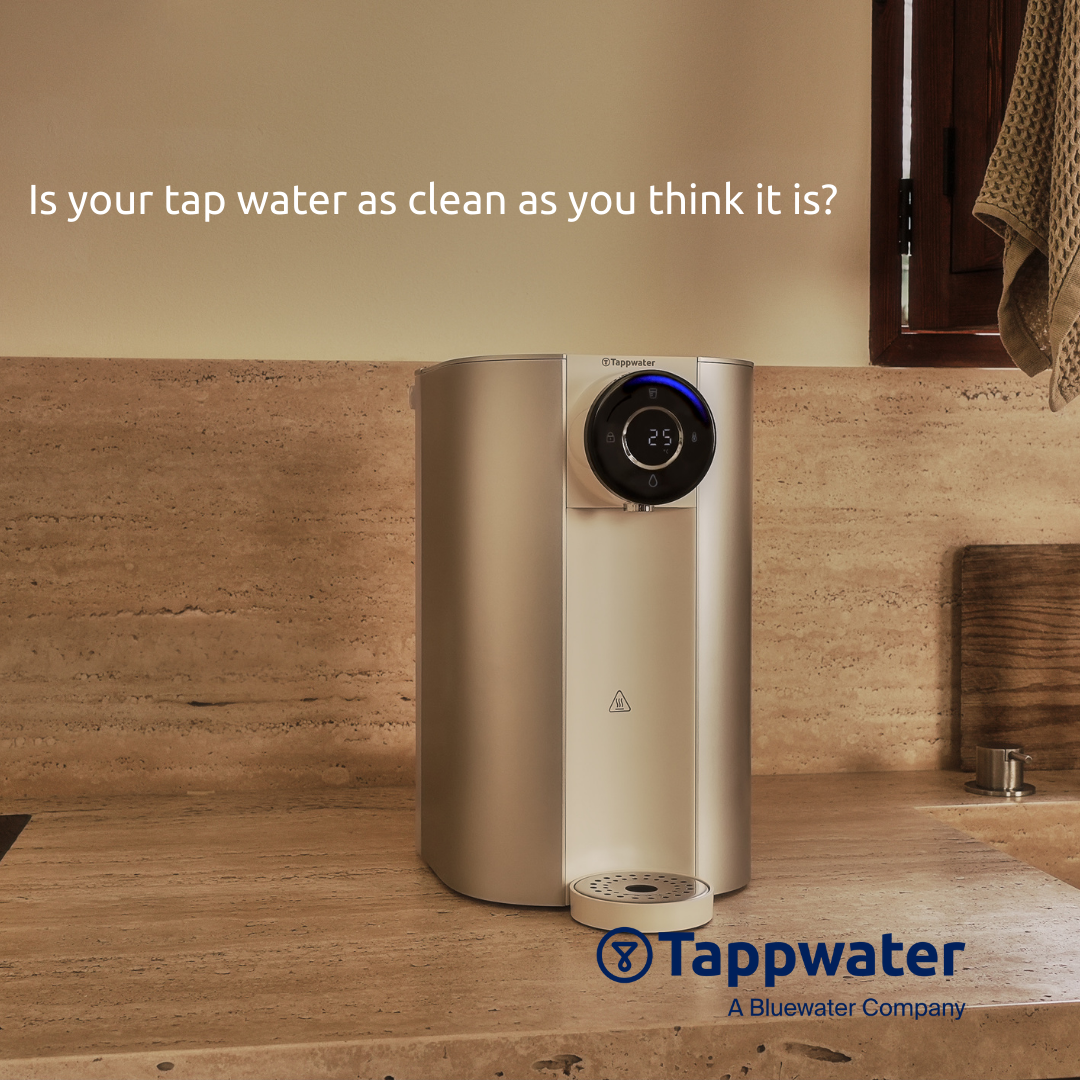

![[WATCH] Malta's Tap Water Challenge: The Tappwater Solution. A Look at the Science, the Tests, and the Deliciously Clean Results.](http://tappwater.mt/cdn/shop/articles/Why_We_lab_tested_maltas_water_Sqaure.png?v=1756738451&width=1080)
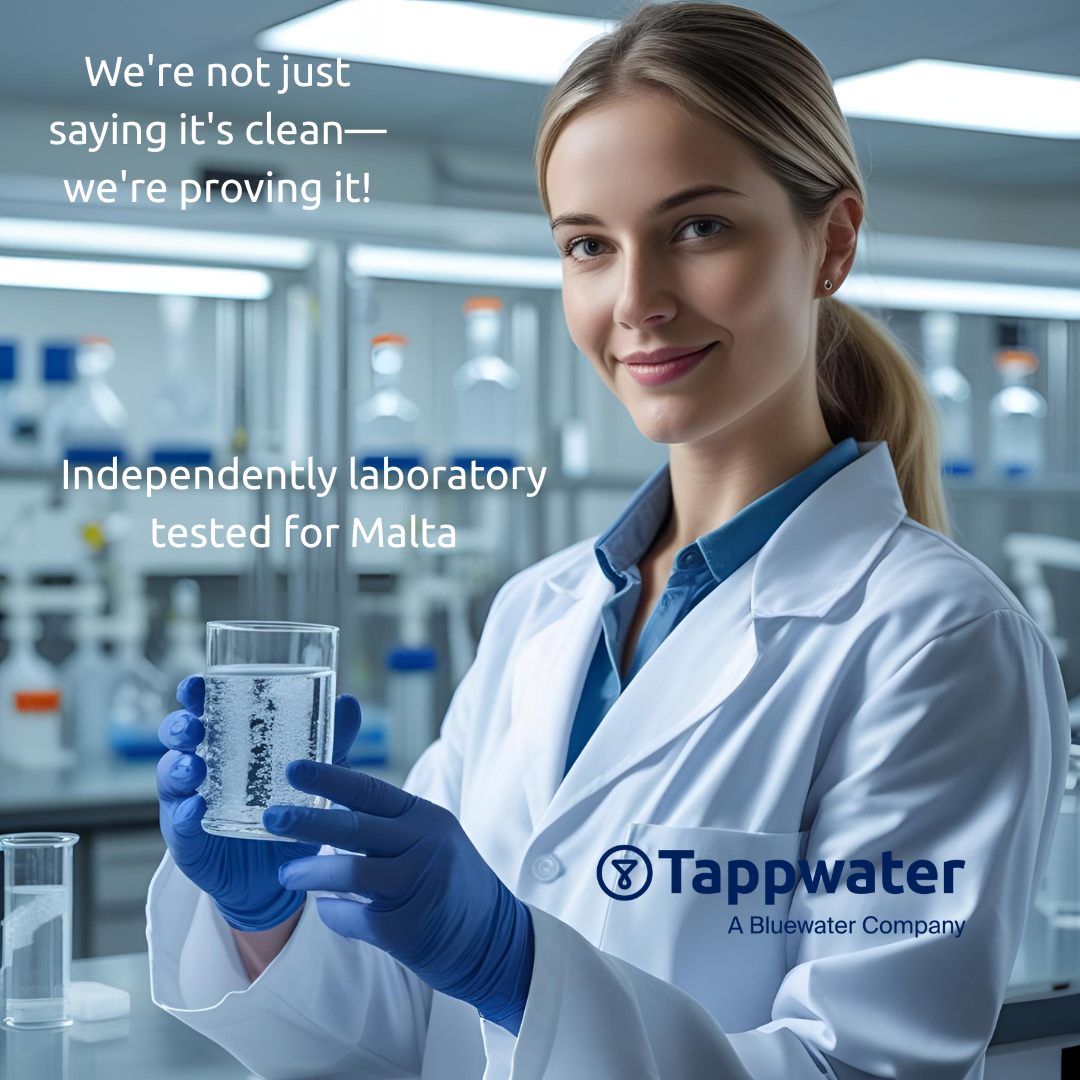
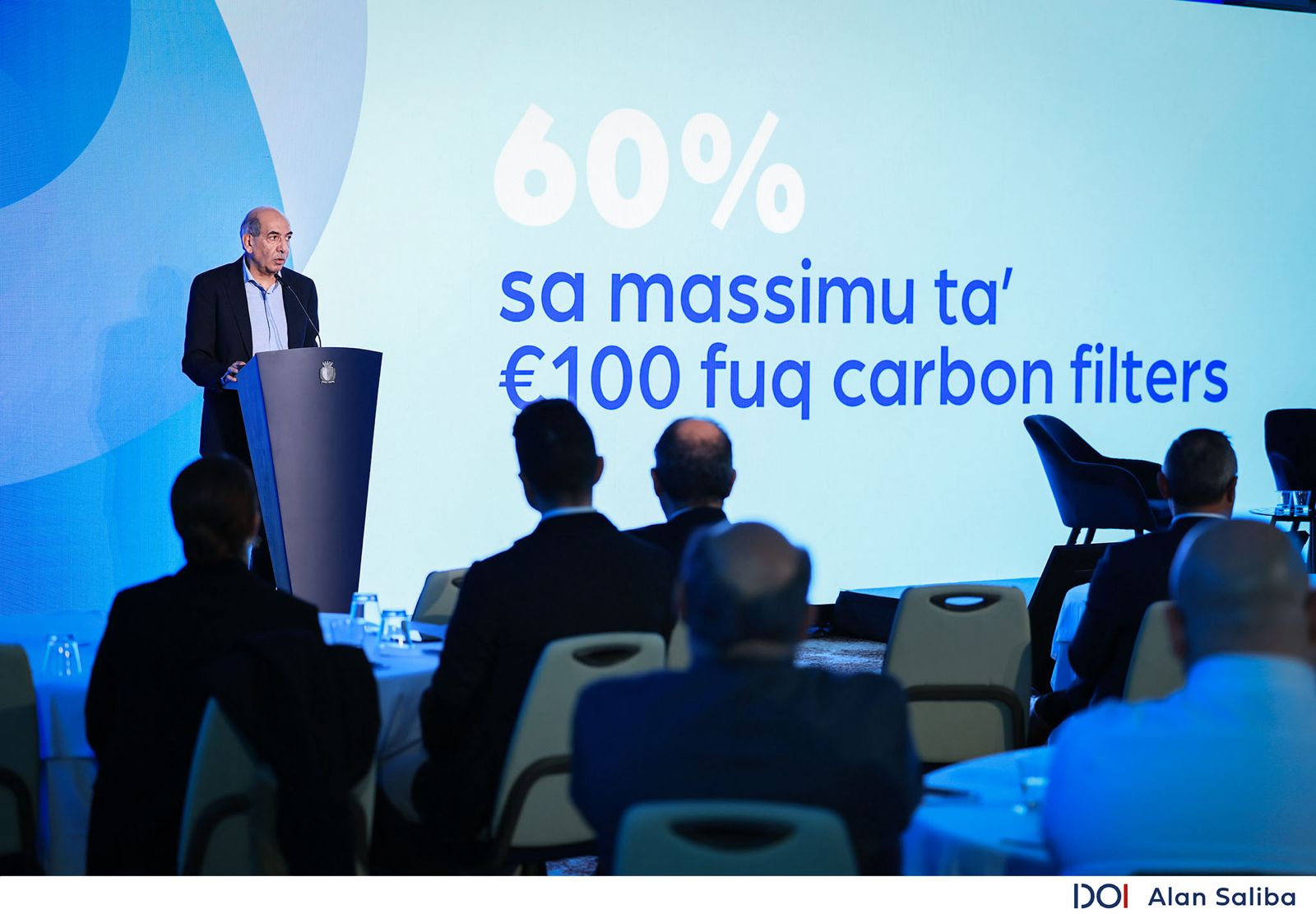
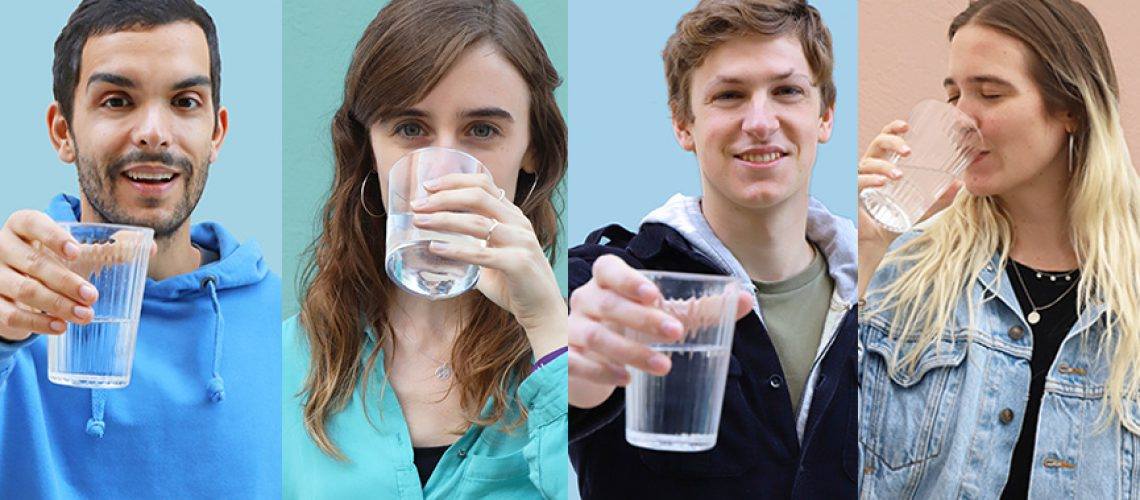
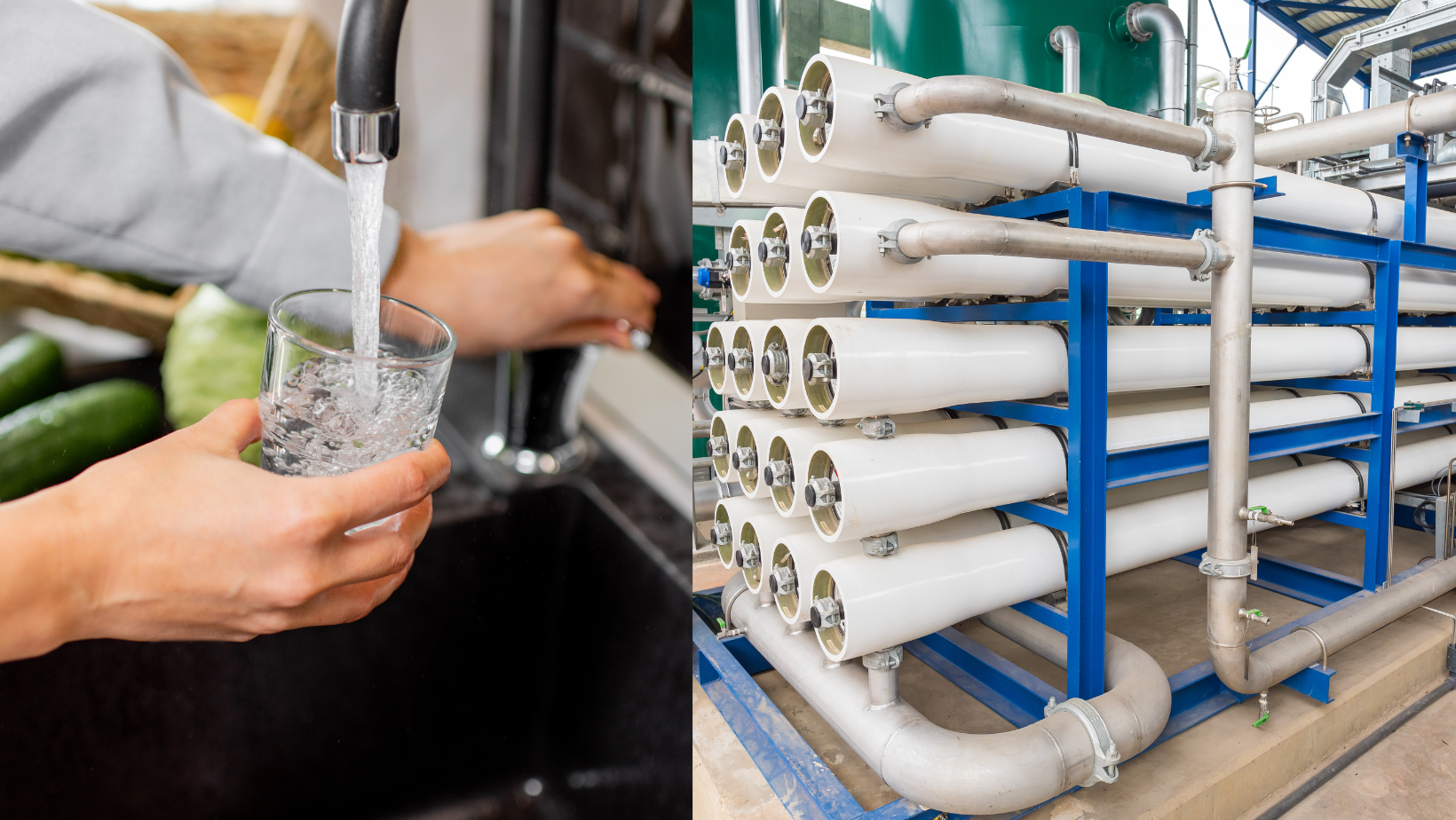
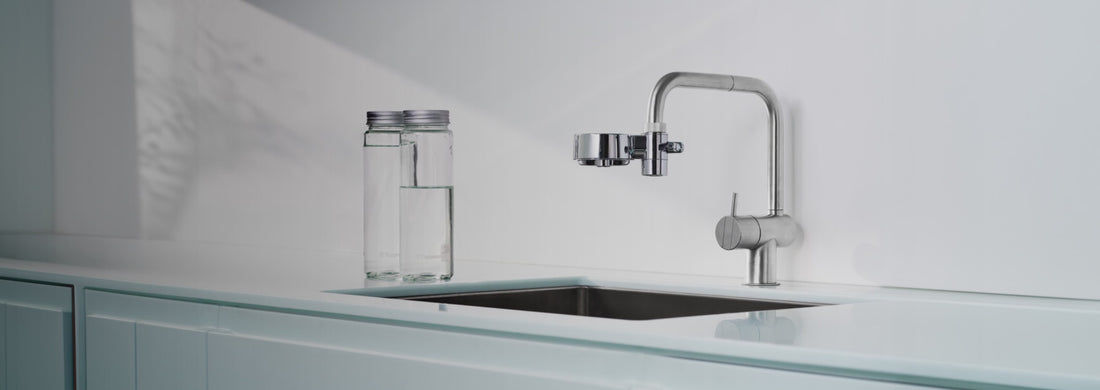

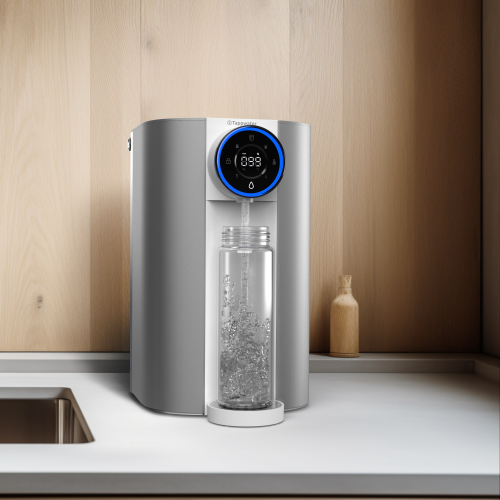
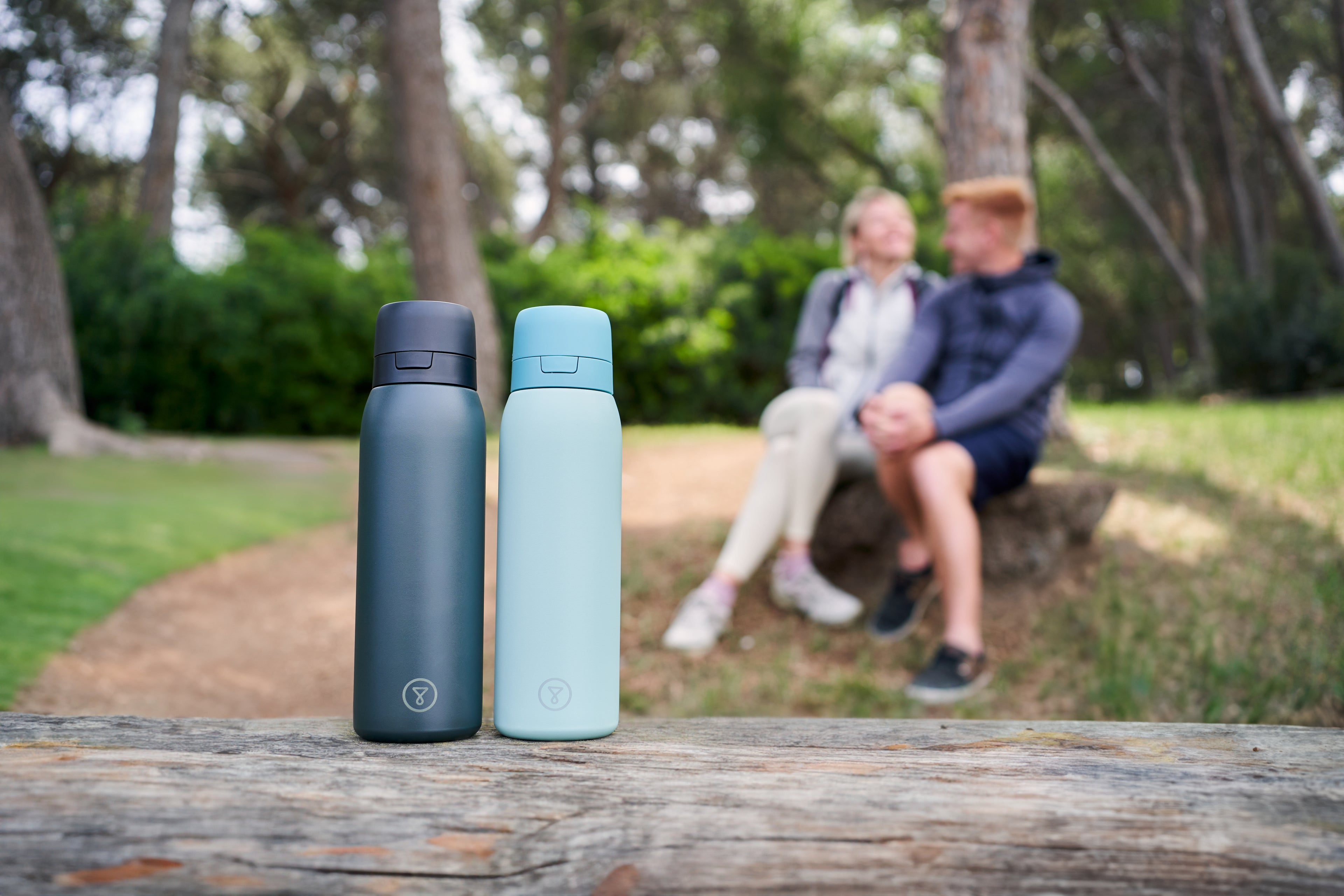
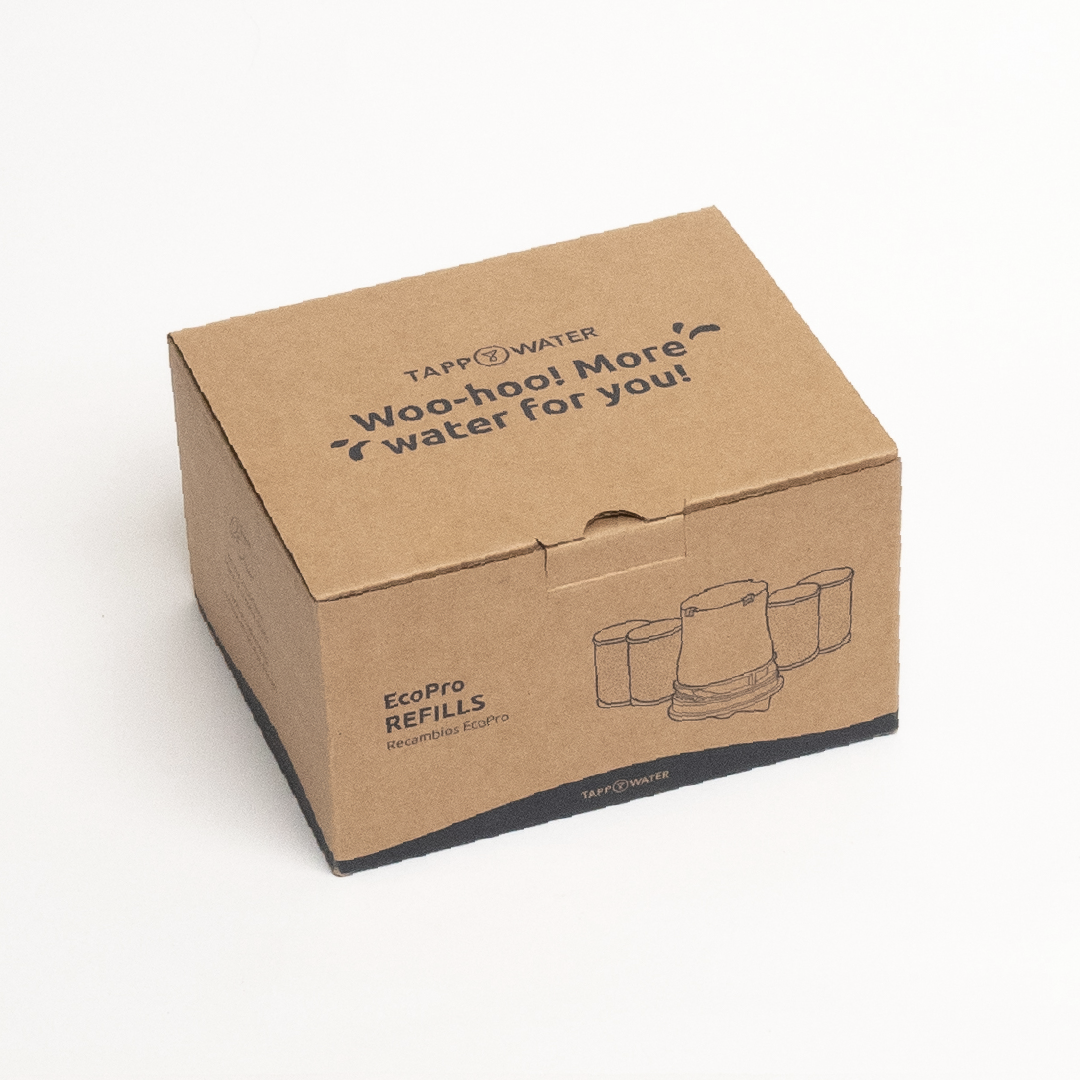
1 comment
Dear Sir/Madam,
We are looking for a domestic under-sink RO system which we aim to use in order to replace our regular purchases of bottled mineral water.
Could you kindly recommend a suitable model? We are a family of 4 and approximately consume 8 to 10 litres of drinking water per day.
In particular, I am interested in:
a) the cost of the unit itself, including installation
b) the approximate running costs of maintenance and filter replacement
c) the actual purity of output water, in terms of approximate mineral content and general hardness, assuming tap water is being fed into the supply line.
d) whether the unit is also compatible with third party filtration units or whether it mandates use of own-brand consumables
e) any other relevant information, including warranty issues, any special offers etc
Thanking you in advance
Best regards